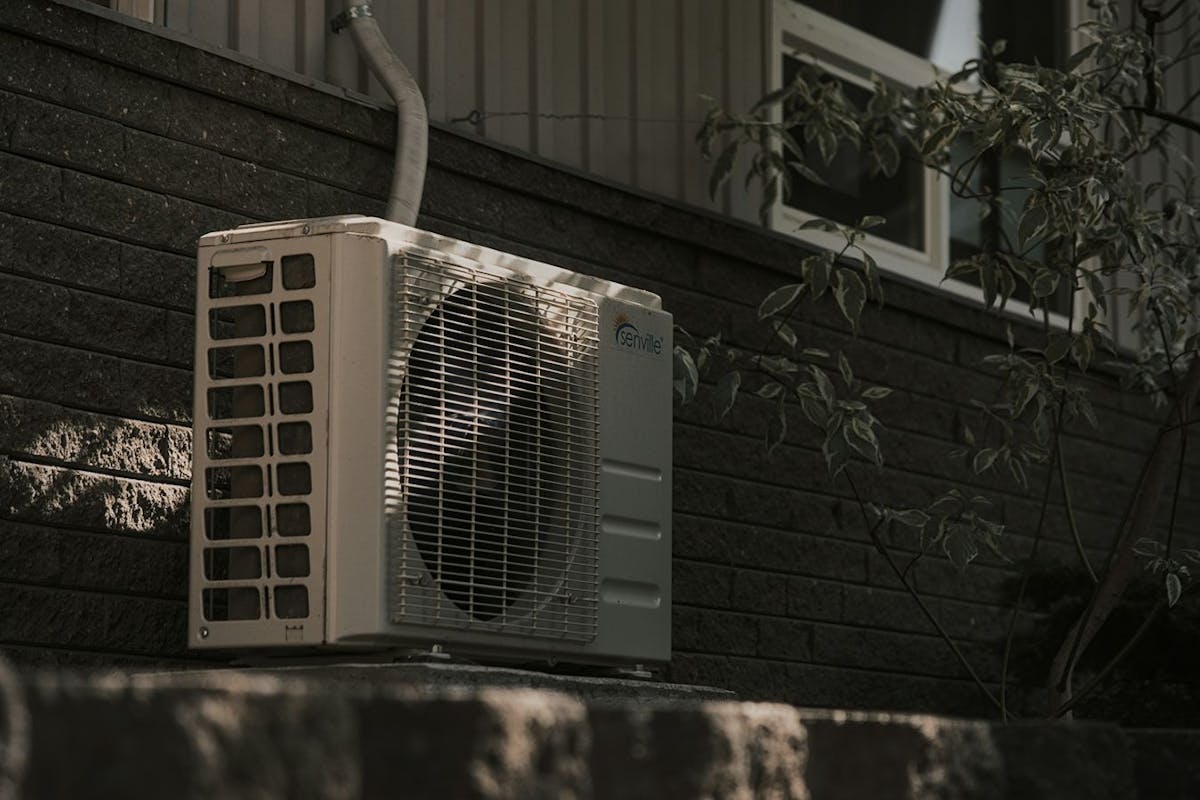Home Energy Monitors: Can They Save You Energy and Money?
Last edited

Author
Andrew Giermak
Solar and Electrification Writer and Editor

Editor
Andrew Blok
Electrification and Solar Writer and Editor

They say knowledge is power. The more you know about your home’s energy usage, the more you can save energy, which means saving money.
The best home energy monitors give you detailed information about how your home uses electricity. You can use that info and reduce or change your energy usage. Here’s more on all the functions and benefits of home energy monitors.
See how much you can save with home energy changes
What’s a Home Energy Monitor?
A home energy monitor measures and tracks electricity usage in your home, giving you feedback about what circuits are using electricity, how much energy is being used, when power is used, and how much that energy costs. Home energy monitors are also known as home electricity monitors, consumption monitors, or power monitors.
Whole-home energy monitors can be placed directly in your electrical panel and identify usage by specific circuits or appliances. Smaller monitors can be plugged into electrical outlets to measure usage directly.
How Does a Home Energy Monitor Work?
Home energy monitors come in two varieties, whole-home and for individual appliances. Each uses different technology to provide energy usage information to the homeowner.
Whole-home energy monitor
A whole-home energy monitor is typically attached to your home’s electrical panel, allowing it to track energy usage past the energy meter as it flows throughout the entire house. The monitor collects detailed data about the power consumption performance of everything attached to the panel. It can also detect the activity of individual appliances on specific circuits.
Whole-house monitors work by either attaching sensors to the main electrical input of your home and detecting the unique energy signature of each device as it turns on and off, or by attaching separate sensors onto individual circuits.
Not only do these sensors gather information about your energy usage. They can analyze the data and send insights to a connected smartphone app or through a regular report delivered by email or in an online portal. By connecting your energy monitor to Wi-Fi, you can get real-time data on what appliances are using the most electricity, so you can make adjustments to lower your energy usage and save money.
Individual appliance energy monitor
While the whole-home monitor can be a great tool, not every one can determine which appliance is using the most energy if you have multiple appliances on one circuit, like several small kitchen appliances sharing a circuit.
An individual appliance energy monitor (sometimes called an outlet monitor) can be extremely useful if you need to monitor a few specific devices. If you suspect that certain appliances are using vampire energy, you can use an energy monitor to track their specific electricity data when they’re supposed to be off.
When you turn on an appliance with an attached monitor, alternating current (AC) energy is sent from the outlet through the monitor and then through the power cord. The energy monitor lets you know how much electricity is being used.
There are some limitations to these individual appliance monitors. You cannot use them for larger 220v appliances like clothes dryers, ovens, or ranges. Also, if you aren't sure where most of your electrical energy is being used before you begin testing, you may end up having to buy quite a few monitors to figure out the problem, or measure outlets individually over a long period of time.
Smart plug outlet
A smart plug is a specific type of energy monitor typically used to provide advanced real-time data for smaller appliances like electronics or cooking gadgets. Just like an individual appliance energy monitor, smart plugs are plugged into the outlet first, and then you plug the targeted appliance into the smart plug. The plug monitors how the attached appliance uses electricity and sends you data on how much energy is being used and when.
In addition to tracking energy usage, smart plugs can also be used to disconnect the power from the device attached to it, which is helpful for electronics like cable boxes that can be turned off at night to save power without losing functionality.
See how much you can save with home energy changes
Whole-Home vs Individual Appliance Energy Monitors
Depending on your needs, you might be better off with a whole-home monitor or an individual appliance energy monitor.
You should choose a whole-house monitor if:
- You aren't sure where, when, and how your home uses electricity.
- You want to keep an eye on the energy usage of all your appliances.
- You don't have a lot of different appliances on one circuit.
- You want to monitor large appliances like your washer, dryer, or oven.
You should choose an individual appliance monitor if:
- You want to target specific appliances rather than monitor all appliances.
- The appliances you wish to monitor are smaller.
Benefits of a Home Energy Monitor
Instead of just guessing, a smart home energy monitor can help you understand how your home uses energy, so you can create a plan to reduce your total electricity consumption and save money.
Information You Can Get From a Home Energy Monitor
| Energy usage (whole home or by appliance) | Cost of energy |
|---|---|
| What’s on? Stop vampire energy | When to use less expensive energy |
| When energy-saving changes make a difference | Catching problems early |
| Solar power tracking |
Know your energy usage
A home energy monitor encourages you to pay attention to how much energy you’re using. It can regularly remind you about your usage habits, which can give you an incentive to correct them.
Know the cost of energy
Many people just look at their monthly energy bill and pay it without thinking about what makes the amount go up and down. The average bill doesn’t share that information. When you install a home energy monitor, you can see where specifically energy is being used, so you can make better choices that could help lower your bills.
Some smart home energy monitors provide real-time tracking of the actual cost of your energy consumption by matching when energy is used with the cost of energy at that time. This could be useful in areas with time-of-use rates where electricity costs vary based on the time of day and shifting your electricity use can save you money..
Know when devices are on
It is common to leave a light on or leave something plugged in without thinking about it. Some home energy monitors can alert you that an appliance is still running.
Use appliances smarter
When you see how much energy an appliance uses and how much that electricity costs, it’s easier to make more informed decisions. For example, if you are running several small loads in your dishwasher each week, you could instead run fewer loads with more dishes to cut your electricity usage.
Make energy-efficient changes
If your monitor reveals your lighting uses lots of energy, you could replace the old light bulbs with LEDs or smart lights. Or, if your washer and dryer use a ton of electricity, you can replace them with newer energy-efficient laundry machines.
See problems before they’re larger
Home energy monitors can track the typical usage of devices, which means they can detect changes that indicate a potential problem. For example, if the compressor in your refrigerator is starting to go bad, your monitor may detect it using more power than expected before you’ll realize something is different. This allows you to proactively check on that appliance and get it serviced before it becomes a bigger deal.
Home Energy Monitors and Solar Panels
A primary reason people install home solar panels is so they can generate their own electricity instead of drawing power from the utility grid. If using an energy monitor helps you reduce or shift your energy usage, it can help you avoid more energy from the grid.
Take a look at your solar app to see how much energy your panels produce. Then, you can compare that number with the amount your energy monitor says your home is using. Some services, like the Palmetto App, may allow you to track both numbers together to identify trends over time.
What Are the Best Home Energy Monitors?
While several companies make home energy tracking devices, these are some of the more popular brands (in alphabetical order) that make some of the best home energy monitors.
Efergy - Efergy makes energy-saving products. One of the unique features of many of their home energy monitors is they include a compact display that can be placed anywhere in the home, so you don’t need a mobile app to view your electricity data. That display can also be set to provide audible alerts if it detects excessive electricity usage.
Emporia - Emporia is building an energy-management ecosystem, including a home energy monitor that can track up to 16 individual circuits and smart plugs that can monitor the energy use of an individual device and control most home appliances. The Emporia Vue is solar-compatible so you can monitor your solar energy generation in real-time. Their product line also includes a bi-directional EV charger and a home battery that can work together through the Emporia app.
Sense - Sense is a popular home energy monitoring system. While the Sense energy monitor doesn’t have separate sensors for individual circuits, it reads your electrical current over 1 million times each second and uses machine learning on that data to determine what devices are on and off. Sense can track how much electricity you consume from solar and the grid, the excess electricity you sell back through net metering, and what percent of your home is being powered by your solar system.
Other companies that make home energy monitors include Inhab by Siemens, Curb by Elevation, Eyedro, Lumin, and Wiser Energy from Square D by Schneider Electric.
How to Choose the Best Home Energy Monitor
When comparing home energy monitor options, these are a few features and options you should look for.
Solar power tracking
If you have solar power or you’re thinking about adding solar panels to your home, look for a monitor that can track solar production in addition to electricity consumption. Real-time energy production data can tell you exactly how much energy your solar panels generate, when they are most productive, and what’s using that solar power.
AI or ML appliance recognition
Every appliance uses electricity in a specific way, so monitors with appliance recognition track the energy usage in your home and use artificial intelligence (AI) or machine learning (ML) to identify the signature of individual appliances and report on their usage.
It can take weeks or even months for the monitor to recognize these patterns, but once detected, they can help you manage your energy usage on a more granular level.
Installation complexity
Many home energy monitors promise easy DIY installation, but we recommend you always get a professional electrician to install them. Since these devices interact with the inner workings of your electric panel, they can pose a significant shock hazard if you don’t know what you’re doing.
Mobile app and notifications
Most energy monitors include a mobile app that allows you to view data about your home’s energy usage. Make sure the app has an interface that’s easy to understand and works for you. You should also look at what notifications the system can provide.
Real-time cost tracking
For homes with a time-of-use plan, you’ll want to look for an energy monitor that can match the time when energy is being used with the cost of that energy. This gives you a real-time look into the cost of electricity that’s being used and can help identify opportunities to shift that behavior to save more money on your monthly energy bill.
Smart home compatibility
Some home energy monitors include Wi-Fi or Bluetooth connections that allow them to interact with other smart home devices in the home. This lets them do things like track when your HVAC turns on and off via the smart thermostat, track when devices are turned on via smart plugs, and turn devices on or off.
Voice control
Some house energy monitors are compatible with Apple HomeKit, Google Home, or Amazon Alexa, allowing you to get a status update on your home’s energy usage by asking your virtual assistant.
Guide to Home Energy Monitors
A home energy monitor helps you gather data about how your home uses energy, so you can create strategies for using less which will save you money.
Once you have used a smart home energy monitor and determined how you are using energy, you can make a plan on how to lower your overall energy usage. This could be small things like unplugging devices when they aren't being used or buying more energy-efficient appliances.
You can also compare your energy usage data with how much energy your home solar power system generates. To learn more about how you can save with solar, get started with Palmetto’s free Solar Savings Calculator. You can also use Palmetto's Savings Maximizer to see how you can save with other home energy upgrades.
See what home electrification can do for you:
Frequently Asked Questions
How can I monitor my home electricity usage?
You can monitor your home’s electricity usage with a whole-home energy monitor. A whole-home energy monitor can be installed in your electrical panel and give you data on your home’s electric consumption.
Are energy monitoring plugs worth it?
Energy monitoring plugs and smart plugs are useful for getting power usage data on one appliance or device. They can also turn off or remotely control appliances to save energy.
Can you save money without an energy monitor?
There are plenty of ways to save money by saving energy without a home energy monitor. Some of the easier, quicker ideas include checking devices that might use vampire energy, replacing old light bulbs with LED bulbs, using a smart thermostat and/or reducing or raising the temperature on the thermostat a bit, and using cold-water cycles and full loads when you do laundry.


